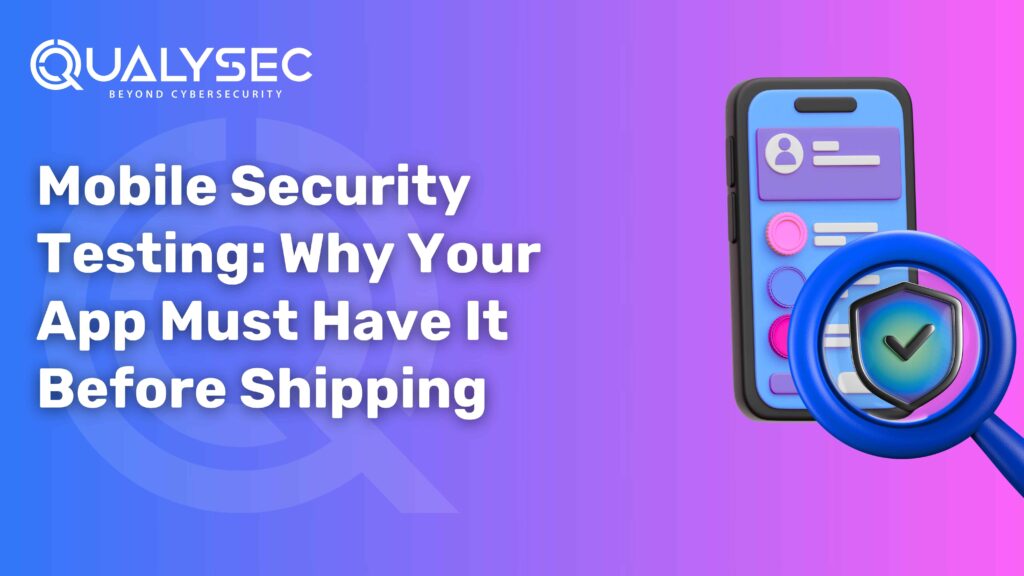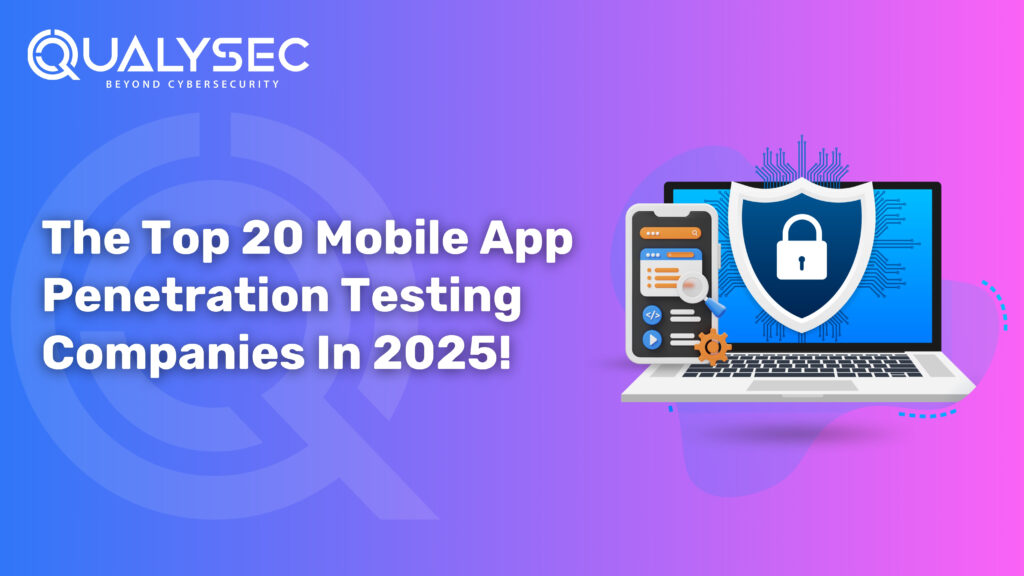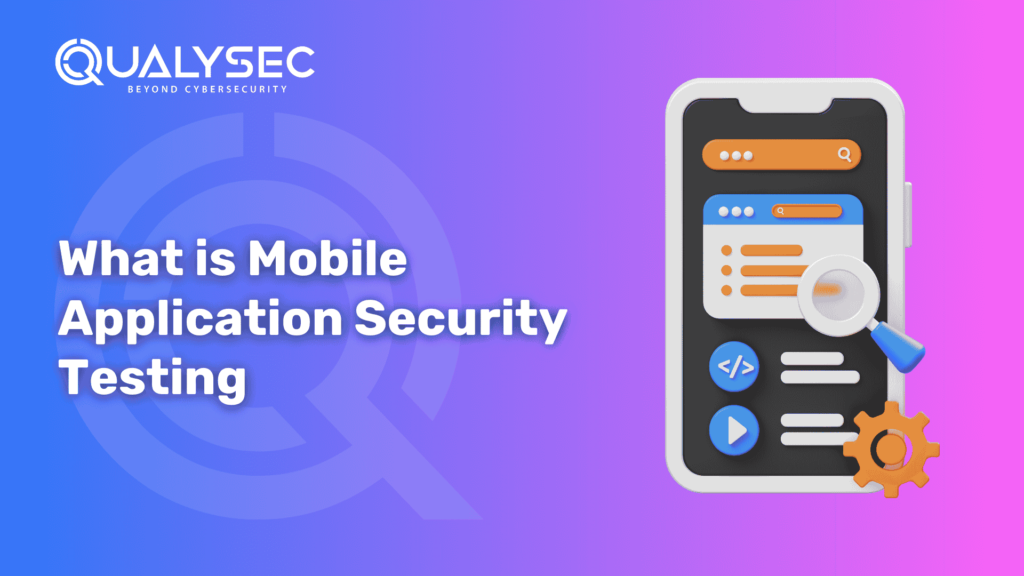Mobile Security Testing: Why Your App Must Have It Before Shipping
Mobile phones have made life easier than ever, whether it’s online banking, tracking your fitness, or staying connected with friends. But as we enjoy the convenience of mobile apps, hackers are also finding new ways to exploit them. In fact, mobile apps have become one of the top targets for cyberattacks. According to a 2023 report by Check Point Research, mobile malware attacks surged by 50% in 2022 alone. This makes mobile security testing a top priority for users, developers and businesses alike. However, in the race to launch new apps quickly, security often takes a back seat. When mobile security testing is skipped or done poorly, apps remain open to serious threats, leading to data breaches, financial loss, and damaged reputation. In this article, we’ll explore: Let’s dive in and understand how to secure your mobile app from the start using effective mobile app security testing tools. Understanding The Mobile Security Threat Mobile threats are constantly evolving, targeting both apps and the data stored on users’ devices. These threats range from data breaches and malware to man-in-the-middle attacks and unauthorized access. According to a Veracode survey, a staggering 85% of the mobile apps they scanned had at least one vulnerability, highlighting just how widespread and serious these security issues are. Common Mobile Security Risks Data Breaches: Mobile apps store personal information like usernames, passwords, and credit card numbers. If the app is not secured, sensitive data is vulnerable to cyber-attacks, resulting in humongous financial losses and loss of reputation. Malware and Ransomware: Trojan malware and spyware may be injected into an application and interfere with its operation. It can lead to data theft, remote command and control, and extortion in the context of ransomware. Man-in-the-Middle (MitM) Attacks: A man-in-the-middle attack occurs when attackers take over server and application communication and steal sensitive data such as login credentials or bank details. Unencrypted Application Code: Since the application code is not encrypted, hackers reverse-engineer the code and seek loopholes to bypass this application. Why Does Mobile Security Testing Matter? Mobile app security testing uncovers and resolves potential vulnerabilities within an application before releasing it into the world. As mobile app development keeps growing to this inflated size, good security is one of the best things developers have on their plates. Here’s why: 1. Protecting User Data: The digital era has brought us to a point where the security of the user’s personal data is at the top of the list of users’ priorities. GDPR and CCPA are data protection legislation with stringent policies that organizations must follow when dealing with users’ data. The mobile application penetration testing verifies that the application’s functionality is performed per the application-defining specification, and the user’s personal information cannot be illegally stolen. Case Study: Facebook (2018) Facebook also experienced the largest data breach in 2018 when a security bug in one of its mobile apps exposed over 50 million users’ personal information. Most bugs were caused by the mobile apps’ lack of quality security bug testing before release. Massive loss of user trust and financial loss was incurred, and release-time mobile penetration testing became compulsory. 2. Maintenance of Compliance: There are specific industries like healthcare and finance where there is a need for strict compliance with standards. For example, medical software has to be HIPAA compliant, and financial software has to be PCI DSS compliant. Non-compliance would amount to sending a golden invitation for litigation and penalty. Case Study: NHS App (2020) The United Kingdom National Health Service (NHS) released a mobile app that enabled patients to read medical records and schedule appointments. However, the app had specific security weaknesses, such as storing user data insecurely. Later, the app was withdrawn and is awaiting a security audit. It was subsequently resubmitted in compliance mode. It taught us how to conduct security testing in regulatory environments before going live with an app. 3. Compensation Loss and Prevention of Reputation: It would be worth $9.44 million in compensation and business reputation loss. It has been pointed out by the Ponemon Institute’s 2022 Cost of a Data Breach Report that an American organisation in the US lost $9.44 million per average incident. Besides that, loss of customer trust would also be accompanied by diminished usage and market share losses. Case Study: Uber (2016) Uber’s all-time worst-affected breach occurred in 2016 when hackers intruded on drivers’ personal details and customers’ personal info of 57 million drivers and users. Uber concealed the hack for over one year, which resulted in the company losing public trust and facing a lot of fines. Incompletion in code security vulnerability and the failure of security testing on the mobile were at fault. Poor security at Uber cost Uber enormous financial and reputational loss that proper testing could have prevented. Malware and Exploit Protection: Security testing of apps exposes the apps to malware and exploits. Penetration testing, vulnerability scanning, and static code analysis are advanced security testing methods that detect and eliminate potential vulnerabilities before being exploited by hackers. Case Study: WhatsApp (2019) Earlier this year, in 2019, the world’s largest messaging app, WhatsApp, was also a victim of a high-profile vulnerability exploitation when hackers installed remote spyware on people’s phones through an unanswered WhatsApp call. Android and iOS were the two platforms that were impacted. While WhatsApp addressed the vulnerability in one go, this is one such incident as to why hardline security testing must be scheduled hard before deploying an application to search for such vulnerabilities. Types of Mobile Security Testing Various forms of mobile security testing must be conducted to ascertain the security and integrity of the app. Most commonly used among these are: 1. Static Analysis (SAST) Static Application Security Testing (SAST) scans an application’s source code, binaries, or bytecode to look for security vulnerabilities. SAST is applied to identify security vulnerabilities like hardcoded credentials, storage vulnerabilities, and insecure processing of sensitive data. 2. Dynamic Analysis (DAST) Dynamic Application Security Testing (DAST) is a runtime behavior test of the application. It






